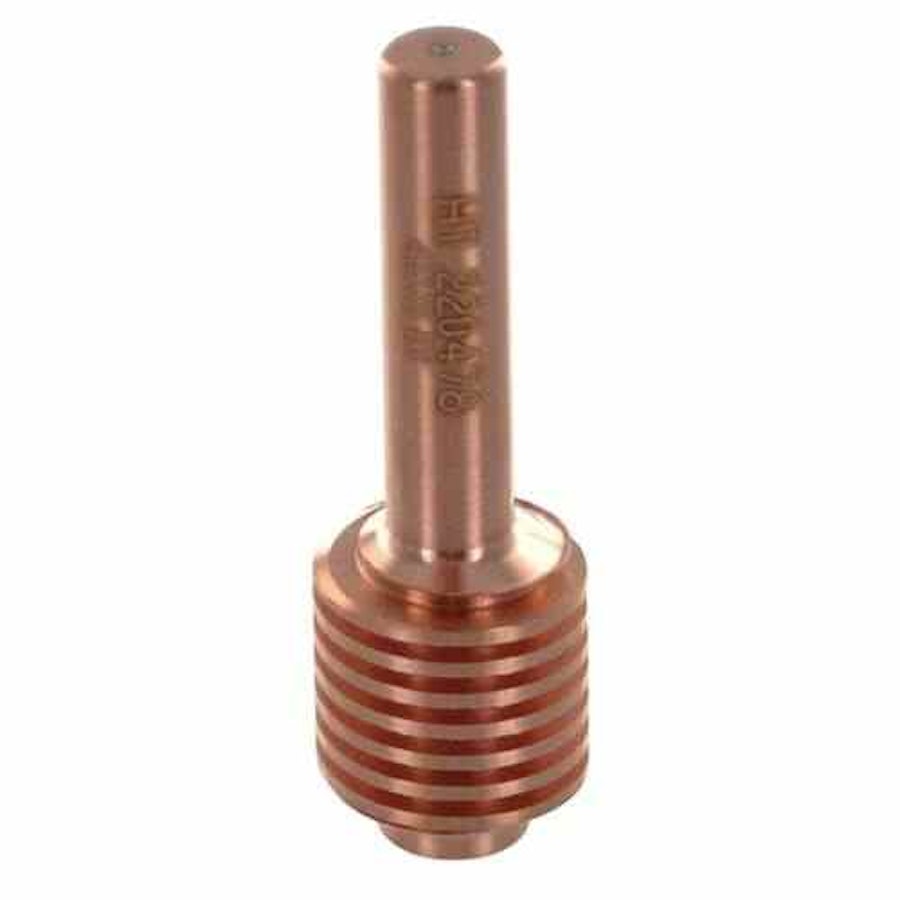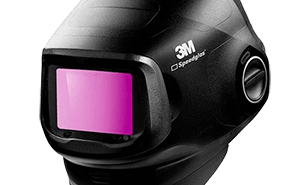Replacing Powermax plasma system consumables
When and why to replace Hypertherm Powermax plasma consumables
A commonly asked question when it comes to running the Powermax plasma systems, is when you should change the consumables. Consumable wear and tear can impact the overall quality and performance of your plasma cutting. Understanding the significance of each consumable and how they function can help you grasp an idea of when it needs replacing, and how important this can be. We have created a breakdown of the five consumables, covering their role and the signs that signal a replacement is due.
The Electrode
Let us start with the electrode, this consumable is the one people tend to leave the longest, exceeding the usage point, before changing it. This can cause a blowout, resulting in a failure of both the electrode and nozzle. The primary function of the electrode in a plasma cutting torch is to provide power to the plasma arc. The electrode has an arc attachment point, a small cylindrical insert in the tip of the electrode which has a very high melting point. This cylindrical insert in the tip must be able to withstand the heat that comes from the plasma arc. As the electrode wears the insert will slowly begin to erode, which forms a small indentation in the centre if the electrode. Hypertherm recommends changing your electrode when the dent depth measures 1mm.


The Nozzle
Now let’s look at the nozzle, it is recommended to change your nozzle and electrode at the same time to ensure optimal cut quality. In comparison to the electrode which carries the electrical current, the nozzle has the important job of focusing the arc by funnelling gas flow. Nozzles are designed with different sized orifices depending on application and amperage, one example being the gouging nozzle which has a wider orifice, resulting in a less defined plasma arc. The nozzle takes the brunt of the heat during the plasma process, the orifice eventually widening over time, the arc becoming wider and less constricted. This results in the width of metal that you remove during the cutting process getting wider, in conjunction with your cut speed becoming slower, as your arc is not concentrated. You should replace your nozzle anytime your orifice shows an out of round, oval, or rounded edge shape to it. Another factor that impacts the nozzle life is proper gas flow, low gas flow rate can lead to immediate destruction of the nozzle. It is important to ensure you have good gas flow if you think your consumable life is premature.


The Shield
Another consumable to consider is the shield, this needs to be changed on a regular basis as well. There are a range of shield shapes available as they vary depending on the type of application they’re designed for. These different types include a drag shield, mechanised shield, and different shields for fine cutting, marking and gouging applications. The shield plays an important role within the plasma cutting process, protecting the other consumables from molten spatter, particularly the nozzle. The shield has a main orifice that aligns with the nozzle’s orifice and may have additional vent holes around the centre. The most common issue associated with the shields are damage to the main orifice or clogging of the vent holes, which can impede on performance. Sometimes you can easily pick or brush the dross of the shield with a wire brush, if the orifice is still round you would not need to replace the shield, if not it should be changed.


The Swirl Ring
The swirl ring is a less obvious consumable to know when to change. The main function of the swirl ring is to control the swirling action of the plasma gas flow around the electrode. It does this to centre the arc on the electrode and through the nozzle, constricting the arc for faster cut speeds and thicker cut capability. The swirl ring has small, angled holes and an o ring seal. You should check the swirl ring for cracks, deformation, and clogged holes, you should replace the swirl ring if any of these are visible. One swirl ring should at least last through 15 electrode and nozzle change out, but this will differ depending on usage patterns. When you assemble your consumables onto a torch it is crucial for you to position the swirl ring correctly. You can use the user manuals that accompany your consumables to ensure you assemble correctly.


The Retaining Cap
Finally, we have the retaining cap, so let’s have a look at what signals wear and replacement. The retaining cap’s primary function is to hold the swirl ring, electrode, nozzle, and shield in place to ensure proper alignment. Inside the retaining cap are holes which aid in directing shield gas, cooling the other consumables, and protecting against excessive heat exposure. When inspecting the retaining cap for wear it is essential to inspect the threads, as overtime dirt will damage the threads, requiring the cap to be replaced sooner. Typically, the retaining cap can last through several electrode and nozzle change-outs. For certain applications including gouging where the arc is on for longer duration, heat exposure can melt or deform the retaining cap, make sure to be wary of this and check the cap for signs of heat exposure.


What are the signs that your consumables are not working as they should?
It may be hard to distinguish when you need to examine your consumables, so here are a few things to look out for that might determine if you need to inspect your consumable wear when plasma cutting
- If you need to slow down considerably, or are not able to cut through the material
- Green discolouration of the arc or fumes
- Excessive dross appearance
- The arc is misfiring or difficult to start
Shop Hypertherm
Shop Hypertherm Consumables
01509 509 269























